I figured out a way that I might be able to insulate the pipe from the wood in order to keep the wood from catching fire. I got some fiberglass pipe wrap from the BBHIS. It cost all of $3.94, so if it doesn't work out I am not out a bunch of money. While this insulation is not intended for use with such high temperatures, I think it will help. According to the interwebs, the melting temperature of fiberglass is about 700° to 1000° F, so I don't think it will melt at the temperatures I am using.
Here is what I bought.

Pipe Wrap Insulation is the correct Search Term
Before I put down the fiberglass, I chiseled out some of the charred wood. I just wanted to get rid of it and to see if it chars again.

Chiseling the Charred Wood Out
The fiberglass batt is 3" across, which is just about perfect for my jig. It fits between the screw holes.
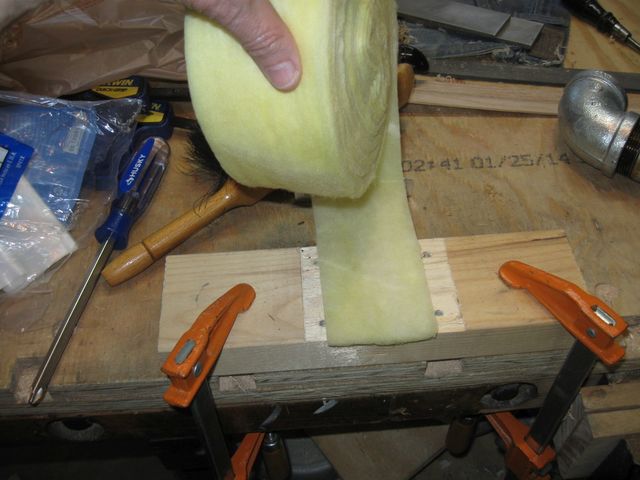
The Fiberglass is the Correct Width
Since this batt is only 1/2" thick, I doubled it over on the wood.

That is Two Layers of Fiberglass.
The pipe fits nicely on the batt.

It Looks Like Everything Fits
So I put it all back together and screwed it down.

We Will See What Happens Next Time
With that chore done, I went back to planing my next practice piece thinner. I figured out that I can clamp the board at one end so that the board is under tension when I plane, not under compression.

This is Working Out OK
There is just one clamp at the tail end of the board, but it seems to hold it down well enough.
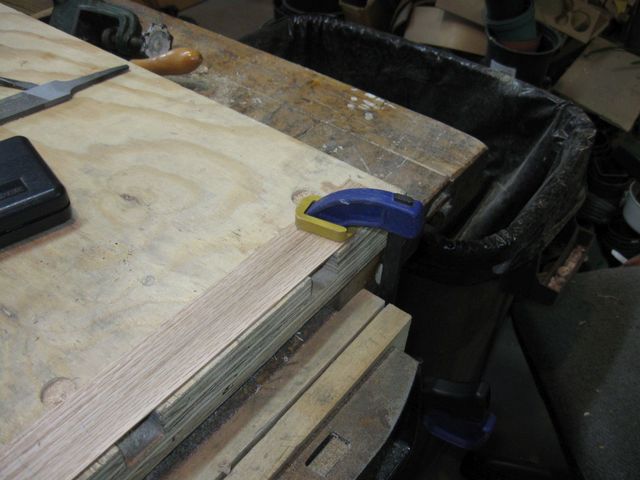
The Clamp Holds Down the Board
After using the plane, I got out the cabinet scraper again to finish it off.
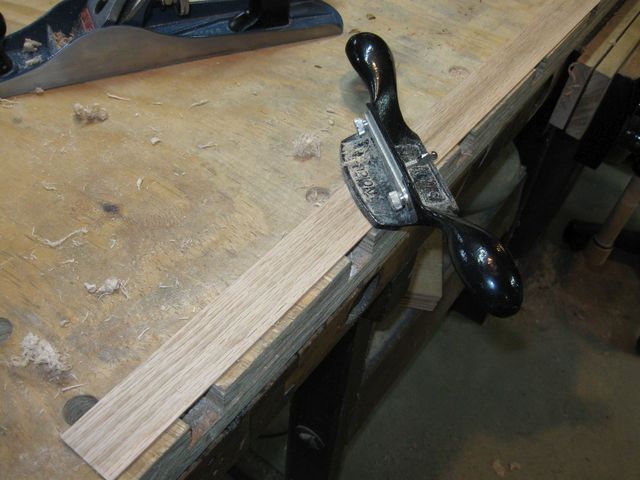
The Cabinet Scraper Works Great
After planing and scraping, I got out my electronic calipers to measure the thickness of the wood. Most of the web sites I have gone to specify the desired thickness of the wood in millimeters, and this caliper reads back millimeters directly.
I measured the thickness of the board in several places, trying for a 2 mm thickness.
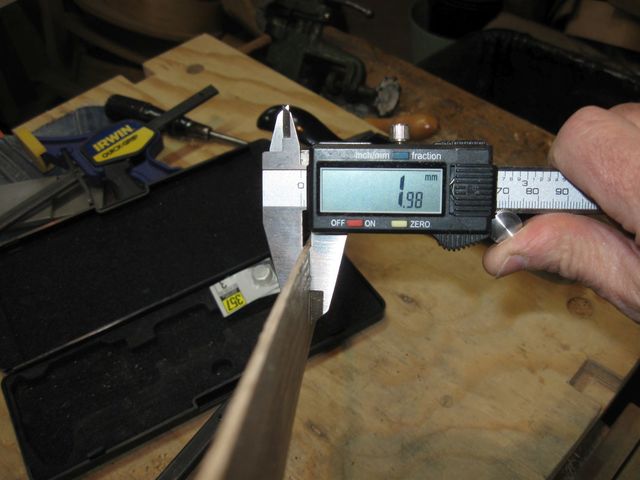
1.98 mm
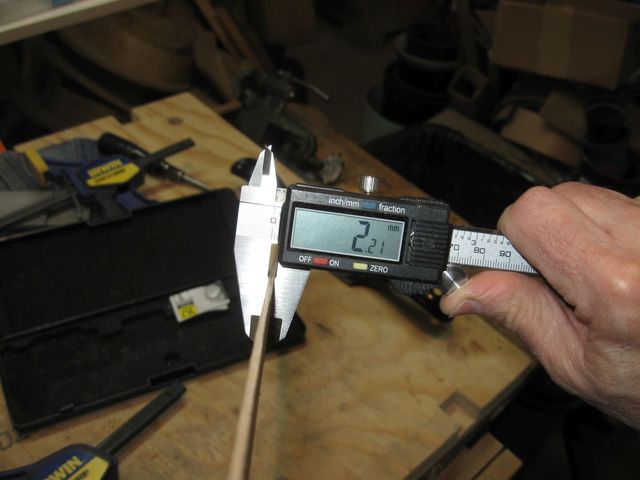
2.21 mm

1.96 mm
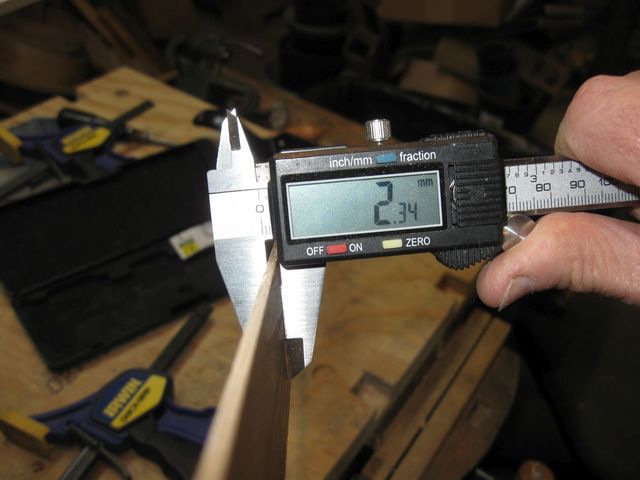
2.34 mm

2.15 mm
That isn't a perfectly flat board, but I ran out of time and had to quit. That might be as good as I can get it for now. I don't want to make it too much thinner in the thin sections. So I will use it like it is. This board is around 1/16" thick, and the one that I bent last time is around 1/8" thick. So I have cut the thickness of the wood in half.
My next step will be to try to bend a side again. Given the charring that I saw on the other board, I might try to adjust the temperature of the iron down somewhat and see if it will bend anyway.
